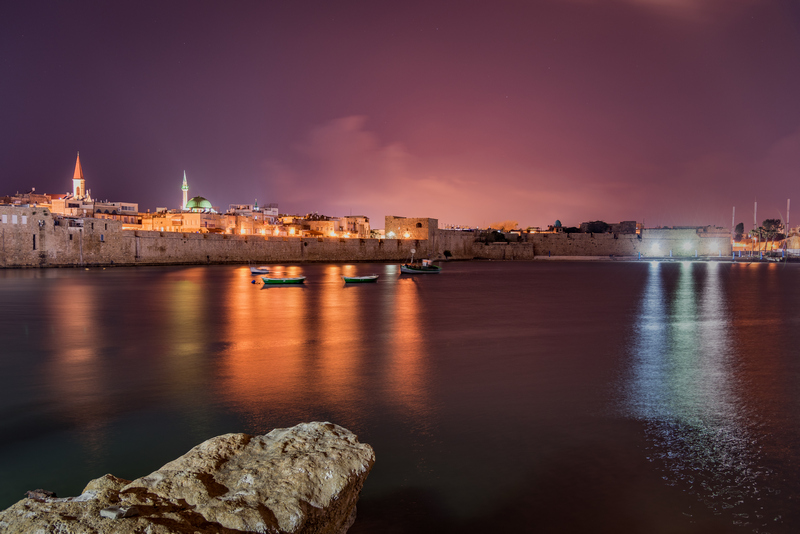|
|
|
A
B
C
D
E
F
G
H
I
J
K
L
M
N
O
P
Q
R
S
T
U
V
W
X
Y
Z
About Appellations Bibliographies Calendars Chronology Contact Diacritic Guide Houses of Worship Numbers Pronunciation Guide Site Map |
| 'Akká |
| Pronunciation: ack-caw |
| Redirected from: See Appellations of 'Akká |
| Arabic name for the port city of Akko (known in ancient times as Accho, in the late
classical period as Ptolemais, and in the crusader era as St Jean d'Acre), located
on the coast of what is now Israel, near Haifa. In the nineteenth century, as a prison-city
or penal colony of the Turkish Empire, it was a place so foul that it was said a bird
flying over 'Akká would drop dead from the stench. In 1868 Bahá'u'lláh was banished to 'Akká, which, on His arrival, He named the Most
Great Prison. For the first two years He and His family were imprisoned in the
prison barracks. It was during this period that Bahá'u'lláh suffered the tragic death of his son Mírzá
Mihdí, and it was here that Bahá'u'lláh revealed a number of Tablets to rulers including the Lawḥ-i-Ra'ís to
'Alí Pás̲h̲á, His second Tablet to Napoleon III, and Tablets
to Czar Alexander II, Queen Victoria and Pope Pius IX. In 1870 the barracks were needed
for housing soldiers, and Bahá'u'lláh was allowed to live in better quarters within the city, first the Houses of Malik, |
| After Bahá'u'lláh moved to Mazra'ih, 'Abdu'l-Bahá remained in 'Akká with the other members of the Holy Family. In 1896, after the passing of Bahá'u'lláh, the Holy Family moved from the House of 'Abbúd to the House of 'Abdu'lláh Pás̲h̲á. It was in this house that Shoghi Effendi was born in 1897. The first Western pilgrims visited 'Abdu'l-Bahá in 'Akká in 1898-9. 'Abdu'l-Bahá was reincarcerated in 'Akká from 1901 until His release in 1908. In 1907 He began moving the Holy Family from 'Akká to Haifa and in 1910 He Himself left 'Akká for His new home at the foot of Mount Carmel. |
| [BD 13] |
| Prison city north of Mt. Carmel, Israel; ancient Ptolemais and the "Strong City" of the Psalms. Site of the Most Great Prison where Bahá'u'lláh was incarcerated. A tablet of 'Abdu'l-Bahá to Mrs. Ella G. Cooper states: "It is recorded in the Bible: 'Achor shall be a door of hope unto them.' This Achor is the City of 'Akká. Whoever interprets this otherwise is ignorant." (Daily Lessons, by H. S. Goodall and E. G. Cooper; quoted Tablet begins on p. 92; specific reference is to Hosea 2:15; transliteration above modernized). (GPB 184; 185). The St. Jean d'Acre of the Crusaders. |
| [BG 7] |
| Note 127. crimson Spot ¶100 This is a reference to the prison-city of 'Akká. In the Bahá'í Writings the word "crimson" is used in several allegorical and symbolic senses. (See also note 115.) |
| [KA-N 127] |
| The prison city in Palestine where Bahá'u'lláh was finally exiled. He arrived there on August 31, 1868. |
| [GWB 347] |
| Acre (Hebrew: עַכּוֹ, 'Akko; Arabic: عكّا, 'Akkā, Ancient Greek, Akre, Ἄκρη) is a city in the northern coastal plain region of northern Israel at the northern extremity of Haifa Bay. The city occupies an important location, as it sits on the coast of the Mediterranean, linking the waterways and commercial activity with the Levant. Acre is one of the oldest continuously inhabited sites in the world. |
| Historically, it was a strategic coastal link to the Levant. In crusader times it was known as St. John d'Acre after the Knights Hospitaller of St John order who had their headquarters there. Acre is the holiest city of the Bahá'í Faith. In 2011, the population was 46,464. Acre is a mixed city, with 75 of the population being Jewish and 25 Arab. |
| [Wikipedia] |
| TOP |
| See also: |
| |
 |
| Acre ( Acco) is a city in the Western Galilee region of northern Israel at the northern extremity of Haifa Bay. Acre is one of the oldest continuously inhabited sites in the country. Historically, it was a strategic coastal link to the Levant. Acre is the holiest city of the Bahá'í Faith. The picture shows an aerial view of the Old City, its harbour, the ancient walls and the Al-Jazzir Mosque. Photo by Itamar Grinberg. (View Full Size Photo) |
| [ |
 |
| Old City of Acre, 1878 by Félix Bonfils (View Full Size Photo) |
| [ |
 |
| Acre's sea wall at night The old city walls of Acre, Israel This is a photo of a heritage building in Israel. Its ID is 16-7600-000 Photo by ארז אשכנזי (View Full Size Photo) |
| [ |
 |
| Acre is located in Israel (View Full Size Photo) |
| [ |
|
A
B
C
D
E
F
G
H
I
J
K
L
M
N
O
P
Q
R
S
T
U
V
W
X
Y
Z
About Appellations Bibliographies Calendars Chronology Contact Diacritic Guide Houses of Worship Numbers Pronunciation Guide Site Map |
| Last Update: |
||
|
||
